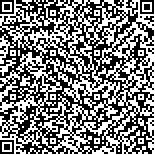张钰,刘元,张文亮,等.短期肺康复程序对男性慢性阻塞性肺疾病急性加重期患者运动能力和生活质量的影响[J].中华物理医学与康复杂志,2020,42(2):146-151
扫码阅读全文

|
| 短期肺康复程序对男性慢性阻塞性肺疾病急性加重期患者运动能力和生活质量的影响 |
|
| |
| DOI:DOI:10.3760/cma.j.issn.0254-1424.2020.02.014 |
| 中文关键词: COPD急性加重 肺康复程序 运动能力 生活质量 日常生活活动能力 |
| 英文关键词: Obstructive pulmonary disease Exercise ability Quality of life Activities of daily living |
| 基金项目:湖南省发改委基金课题[湘发改高技(2012)1521号] |
|
| 摘要点击次数: 5392 |
| 全文下载次数: 5699 |
| 中文摘要: |
| 目的 探讨短期肺康复程序对男性慢性阻塞性肺疾病(COPD)急性加重期患者运动能力和生活质量的影响。 方法 将38例男性COPD急性加重期患者随机分为康复组(n=20)和对照组(n=18),2组均予健康教育指导及常规药物治疗,康复组在常规治疗基础上予以7 d三阶段肺康复程序干预,包括遥测心电监护下的呼吸训练、床旁弹力带阻抗训练及渐进性低强度有氧训练。于入院第一天(干预前)和干预7 d后(干预后)由培训合格的康复治疗师在双盲状态下对2组患者行运动能力[包括30 s椅子起坐试验(30-STS)和30 s前臂负荷屈曲试验(30-ACT)]、生活质量、日常生活活动能力评估(该评估包括三个阶段,即干预前、干预3 d后和干预7 d后)和出院后2个月内的体力活动水平评估。 结果 干预后,康复组的30-STS次数和30-ACT次数,以及对照组的30-ACT次数较组内干预前,均明显增加,差异均有统计学意义(P<0.01),与对照组干预后相比,康复组干预后的30-STS次数和30-ACT次数明显增加,差异均有统计学意义(P<0.05)。干预后,2组患者的CAT评分均显著优于组内干预前,差异均有统计学意义(P<0.01),且康复组干预后的CAT评分亦显著优于对照组,差异有统计学意义(P<0.01)。2组患者干预3 d、7 d后的MBI评分与组内干预前比较,差异均有统计学意义(P<0.01),且康复组干预7 d后的MBI评分与组内干预3 d后以及对照组干预7 d后比较,差异均有统计学意义(P<0.01)。出院2个月后,康复组患者中等水平体力活动者由原来的6例(30.0%)增加到19例(95.0%),对照组由原来的4例(22.2%)增加到12例(66.7%),2组间比较,差异有统计学意义(P<0.05)。 结论 三阶段肺康复程序可显著改善男性COPD急性加重期患者的运动能力、生活质量、日常生活活动能力和出院2个月后的日常体力活动水平。 |
| 英文摘要: |
| Objective To investigate the effects of short-term pulmonary rehabilitation on the exercise ability and life quality of men with acute exacerbations of chronic obstructive pulmonary disease (COPD). Methods Thirty-eight male COPD patients with acute exacerbation were selected and randomly divided into a rehabilitation group (n=20) and a control group (n=18). Both groups were given routine health education and medication, while the rehabilitation group was additionally provided with a 7-day, three-stage rehabilitation intervention, including the respiratory training, resistance training using a resistance band and gradual low-intensity walking training, all under remote electrocardiographic monitoring. Before and after the intervention, both groups′ exercise ability was evaluated using the 30-second chair sitting test (30-STS) and a 30-second forearm load flexion test (30-ACT). Each subject′s quality of life and ability in the activities of daily living were evaluated by two qualified rehabilitation therapists. The subjects′ level of daily physical activity was assessed 2 months after discharge. Results After the intervention the average 30-STS and 30-ACT results of the rehabilitation group had improved significantly. The 30-ACT results of the control group were also significantly improved. After the intervention the average 30-STS and 30-ACT results of the rehabilitation group were significantly better than the control group′s averages. The average CAT and MBI scores of both groups were significantly better after the intervention, with the rehabilitation group′s averages significantly better than those of the control group. Two months after discharge, the number of patients with at least moderate daily physical activity increased from 6 to 19 in the rehabilitation group and from 4 to in the control group, a significant difference between the two groups. Conclusion The three-stage pulmonary rehabilitation program is helpful for improving the exercise ability and quality of life of COPD sufferers, and their ability in the activities of daily living. Their level of daily physical activity is higher 2 months after discharge. |
|
查看全文
查看/发表评论 下载PDF阅读器 |
| 关闭 |